Easy Tricks to Teach a Older Dog
Shake, Speak , Take it and P lay dead … these useful, useless, and always charming tricks have been around since cavemen first shared their bones with wolves. We all love our pets, but sometimes it can feel like your dog is incapable of learning any tricks. But with the right techniques and proper amount of practice, your dog will learn everything. And the first let try with those easy tricks to teach your dog.
The tricks in this article have withstood the test of time for a reason: they are simple to teach and easy to learn. They capitalize on dogs' natural behaviors by associating familiar actions with verbal cues.
Is your dog vocal? It should be simple for you to elicit a bark, associate it with a cue, and reward it. Retrievers will no doubt fetch before they are out of puppyhood, and hyper dogs will be excited to proffer a paw when encouraged to "shake." Let's get started teaching these traditional favorites!
1. Hands Shake
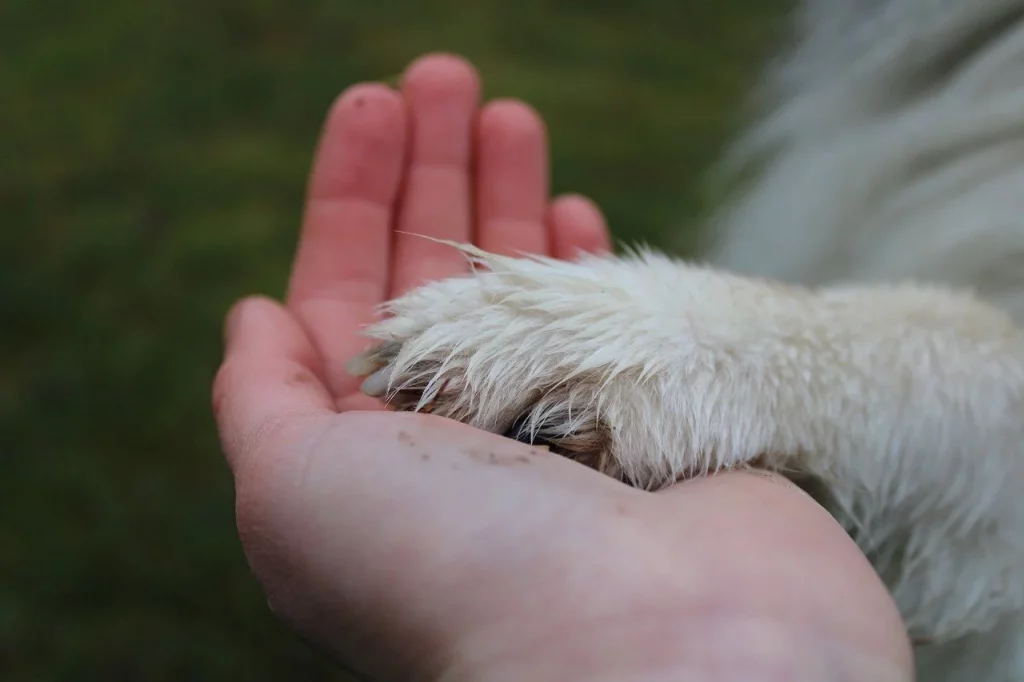
Steps For Training
When guests shake hands with your puppy, he elevates his hand to chest height, allowing them to shake his hand. Both hands are taught this technique.
step 1
Hide a treat in your right hand, low to the ground, when your puppy is sitting in front of you. Say "get it" and "shake" to encourage your dog to paw at it. When your dog's left paw gets off the ground, reward him with a treat.
step 2
Increase the ante by gradually raising the height of your hand until he is lifting his paw to chest height.
step 3
Switch to utilizing the hand gesture. Stand up, place the treat behind your back in your left hand, then extend your right hand while cuing "shake." When your dog paws your extended hand, keep his paw in the air and praise him from behind your back.
Step 4
To teach "paw," repeat the same steps on the opposite side.
WHAT TO EXPECT: Any dog can learn this trick, and it's always an endearing gesture. Practice a couple of times per day, and always leave off on a high note. Chain these behaviors together to alternate "shake" and "paw" in quick succession.
TROUBLESHOOTING
INSTEAD OF PAWING AT MY HAND, MY DOG NOSES IT
Bop his nose a little to discourage this. He may try barking, nuzzling, or doing nothing. Be patient, and keep encouraging him. If he is not lifting his paw on his own, tap or barely lift it for him and then reward.
Once you've mastered shake hands and paw , use a similar action to learn Sit, Stay, and come .
TIP: Use the word "good" to mark the exact instant your dog performed the desired behavior.
- Place a treat in the palm of your right hand, low to the ground.
- Raise your hand when your dog improves.
- Get up and give your dog a command.
- Reward him by holding his paw.
2. Fetch/Take It
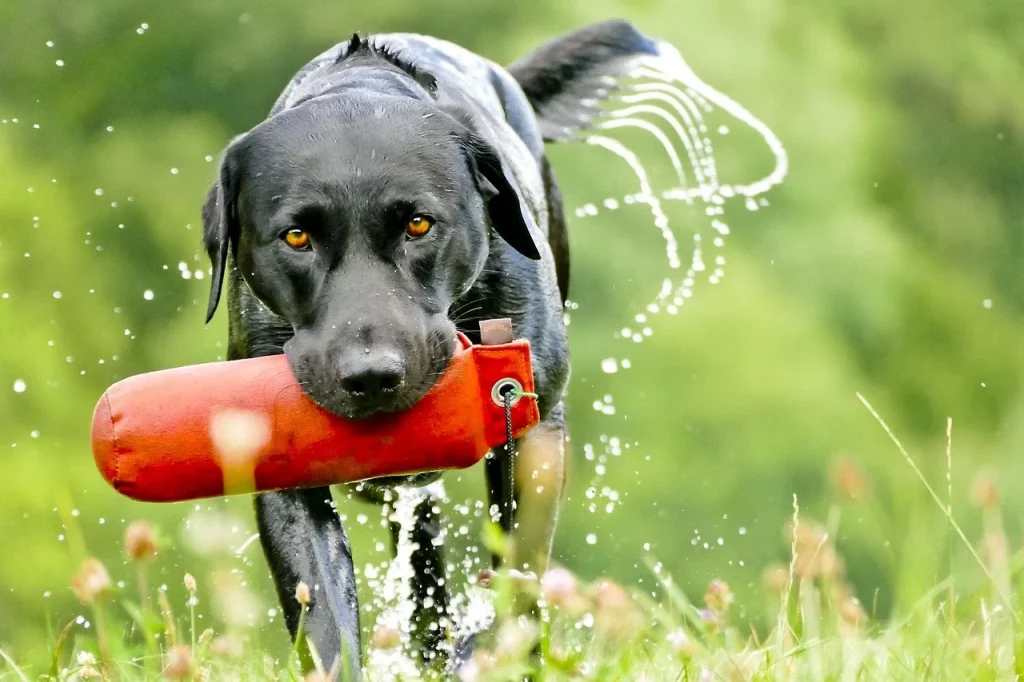
VERBAL CUE
Fetch (retrieval) Take it (object within reach)
Steps For Fetch Training
Your dog is directed to retrieve a specified object. Take it is when he takes an object within reach into his mouth.
Use a box cutter to make a 1" (2.5 cm) slit in a tennis ball. Show your dog as you drop a treat inside the ball.
Step 1
Toss the ball playfully and encourage the dog to bring it back to you by patting your legs, acting excited, or running from him.
Step 2
Take the ball from your dog and squeeze it to release the treat for him. As he is unable to get the treat himself, he will learn to bring it to you for his reward.
Steps For TAKE IT Training :
Step 1
Select a toy that your dog enjoys and playfully hand it to him while giving the verbal cue.
Step 2
Have him hold it only a few seconds before removing it from his mouth and trading him a treat for it. As your dog improves, extend the time he holds the object before treating. Only treat if you remove the toy from your dog's mouth, not if he drops it on his own.
Step 3
Be creative! Have your dog hold a flag as he circles the field or has he carry a charming "feed me" sign. A dog holding a pipe is always good for a laugh, and a posh pooch carrying a basket of cocktail napkins is sure to impress!
WHAT TO EXPECT: Many dogs are natural retrievers and will understand this trick within a few days.
TROUBLESHOOTING
MY DOG HAS NO INTEREST IN CHASING THE BALL
Motivate your dog by acting excited and chasing the ball yourself. Bat
it around or bounce it off walls. Make it a competition and race him for it.
MY DOG GETS THE BALL AND RUNS OFF WITH IT
Never chase your dog when he is playing keep-away. Lure him back with a treat, or run away from him to encourage him to chase you. Have a second ball to get his attention.
TIP: Excessive mouthing of tennis balls can lead to tooth wear. If your dog is a chewer, give him a hard rubber toy such as a Kong.
- Make a slit in a tennis ball and drop a treat inside.
- Toss the ball playfully.
- Squeeze the ball to release the treat.
TAKE IT:
- Hand your dog a favorite toy.
- Trade him a treat for the toy.
- Have your dog take and hold other objects!
3. Drop It/Give
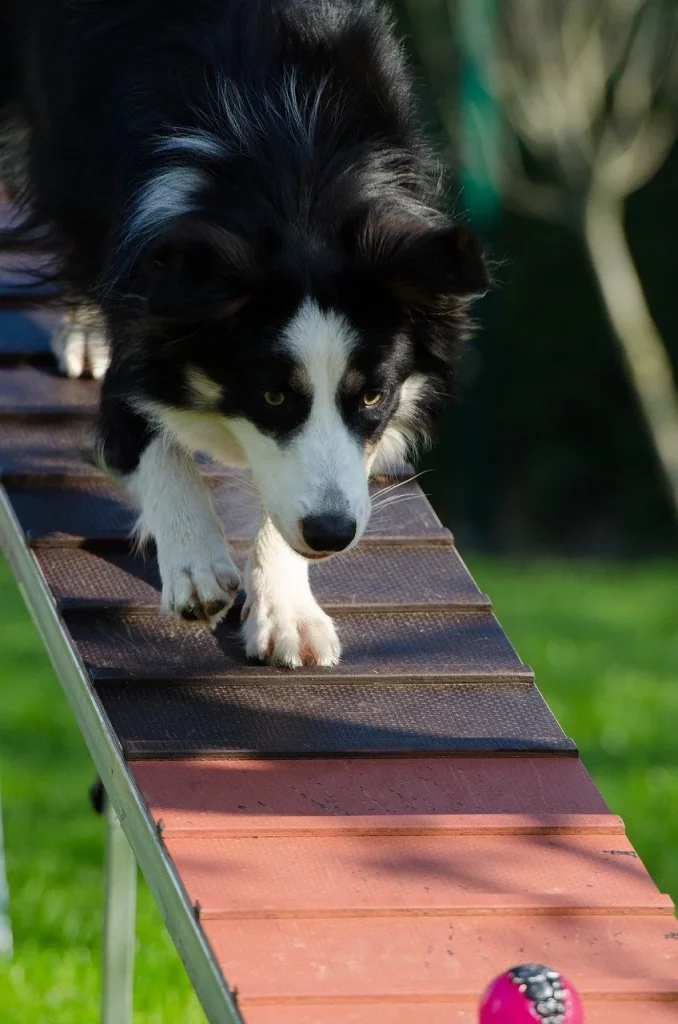
VERBAL CUE
Drop it
(release to ground) Give (release to hand)
Steps For Training
On the drop it cue, your dog releases the object from his mouth, dropping it onto the ground. Give is released to your hand.
DROP IT:
Step 1
Is your dog food or toy motivated? Point to the ground and command your dog to "drop it." Do not move from your location, and keep repeating the command. It may take several minutes, but when your dog finally drops the toy, reward him with food or by throwing his toy.
GIVE:
Step 1
While your dog has a toy in his mouth, tell him to "give" and offer him a treat in exchange for the toy. He will have to release the toy to eat the treat, at which time you can praise him.
Step 2
Give your dog his toy back, so he understands that relinquishing it to you does not mean that it will be taken away.
WHAT TO EXPECT: Dogs vary in their willingness to relinquish a toy. Build a habit of only throwing the toy if your dog relinquishes it willingly.
TROUBLESHOOTING
MY DOG WILL NOT RELEASE THE TOY
Try using a less desirable toy and rewarding him with a highly desired toy when he obeys.
SHOULD I FORCE AN OBJECT AWAY FROM HIM?
No, as this could result in a dog bite, intentional or not. A better way to get a dog to release his grip is to pull upward on the skin on the side of his rib cage.
TIP: To open a dog's mouth for exam, put your hand over the top of his muzzle, roll his lips over his teeth, and separate the jaws.
DROP IT:
- Point to the ground and command "drop it."
GIVE:
- Trade a treat for your dog's toy. intermediate
4. Balance and Catch
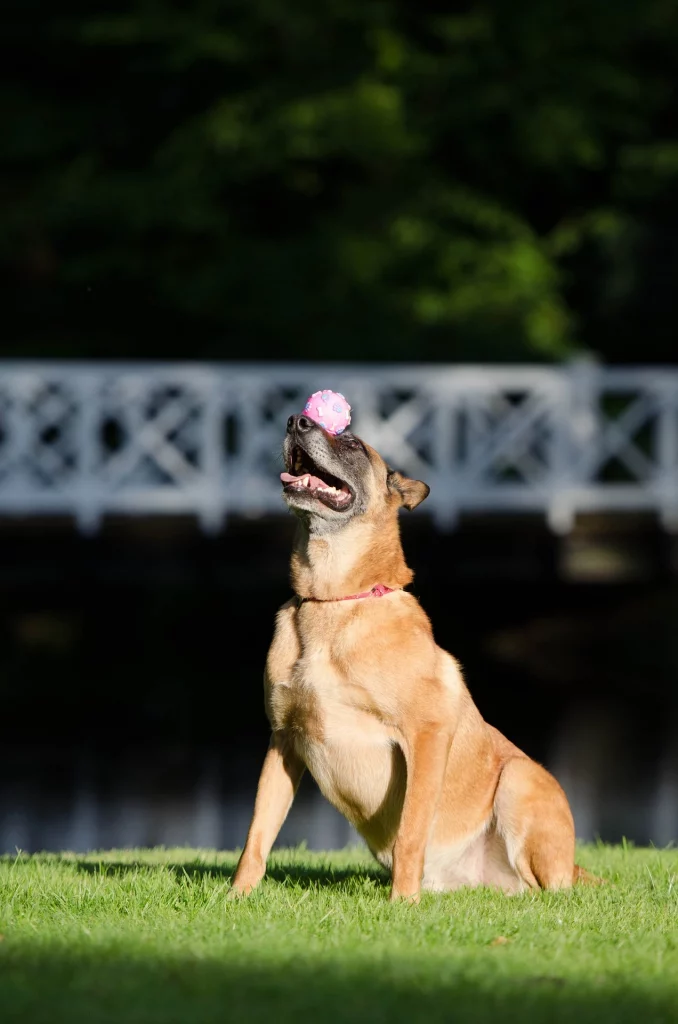
VERBAL CUE
Wait, Catch
Steps For Training
Your dog balances a treat or toy placed on his nose and, at your signal, tosses it and makes the catch.
Step 1
Position your dog in a sit (4 Easiest Commands To Teach Your Puppy) facing you. Gently hold your dog's muzzle parallel to the floor and place a treat upon the bridge of his nose. In a low voice, coach him to "waaait."
Step 2
Hold this position for just a few seconds before releasing his muzzle and telling him to "catch!" Exuberant dogs will probably send the treat flying and will have to chase it down. You'll want to slow these dogs down by using a calm, quiet "catch." Practice will hone their abilities until they can do it every time.
Step 3
If your dog is allowing the treat to fall to the floor, pretend to race him to pick it up. He will learn that he needs to catch the treat or risk losing it to you on the floor.
Step 4
As your dog improves, require him to balance the treat on his nose without the help of your hand on his muzzle. Placing the treat near the end of your dog's nose is usually easiest to catch, but every dog is different.
WHAT TO EXPECT: Some dogs will have naturally better coordination, but all dogs will benefit from the motor functions practiced in this skill.
TROUBLESHOOTING
HIS NOSE IS TOO SHORT!
Although it is possible to teach this trick to pug-nosed breeds, it is more difficult. A bendable treat, such as a wet noodle, is easier to balance.
THE TREAT FLIES THROUGH THE AIR WHEN MY DOG TRIES TO CATCH IT
Here's another case where you can race him for the treat to increase his motivation to catch it quickly.
Note! Increase the difficulty of this trick by having your dog beg while balancing the treat.
- Hold his muzzle parallel and place a treat upon it.
- Remove your hand while he balances the treat.
Practice will perfect his catch!
5. Speak
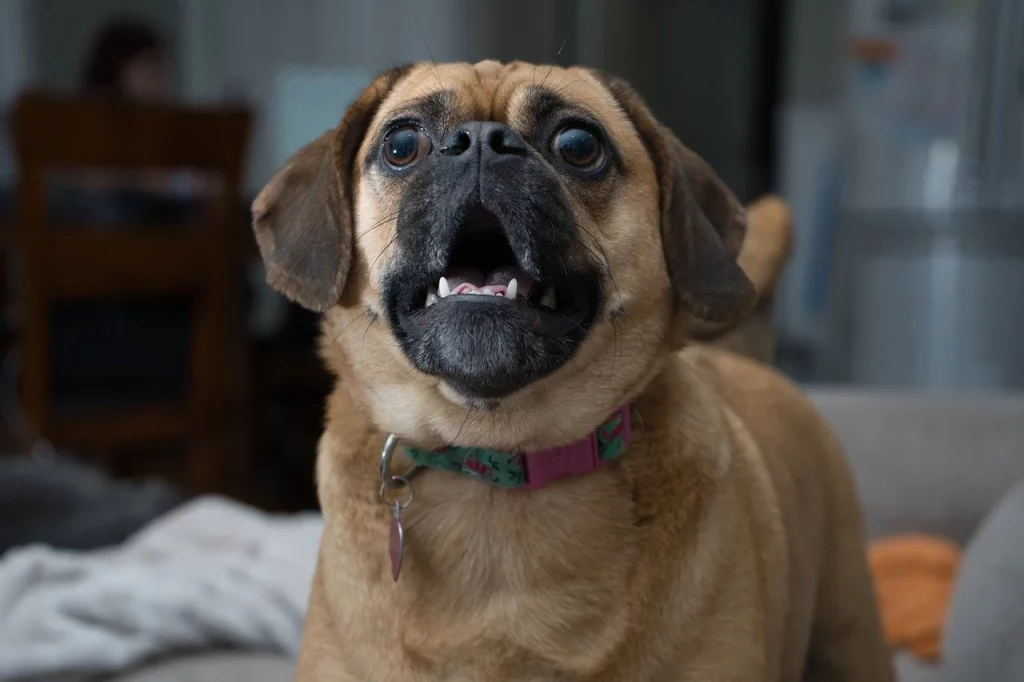
Steps For Training
Your dog barks on cue. If your dog is barking up the wrong tree … then this is the trick for him!
Step 1
Observe what causes your dog to bark—a doorbell or knock the postman, the sight of you with his leash—and use that stimulus to teach this trick. Because most dogs bark at the sound of a doorbell, we'll use that as an example. Stand at your front door, with the door open so your dog will be able to hear the bell. Give the cue "bark" and press the doorbell. When your dog barks, immediately reward him and reinforce the cue with "good bark." Repeat this about six times.
Step 2
Continuing in the same session, give the cue but don't ring the bell. You may have to cue several times to get a bark. If your dog is not barking, return to the previous step.
Step 3
Try this trick in a different room. Strangely enough, this can be a difficult transition for your dog. If at any point your dog is repeatedly unsuccessful, return to the previous step.
WHAT TO EXPECT: Provided you've got a reliable stimulus that causes your dog to bark, he can learn this trick in one session.
TROUBLESHOOTING
I'VE CREATED A BARKING MONSTER!
Never reward your dog for a bark unless you asked for this behavior. Otherwise, he'll speak up anytime he wants something!
I CAN'T FIND A STIMULUS TO MAKE MY DOG BARK.
Dogs will often bark out of frustration. Tease him with a treat: "Do you want it? Speak for it!"
TIP: Lower your voice, with your finger to your lips, and tell your dog to "speak whisper." Reward a low volume sound.
- Ring the doorbell.
- Try to elicit the behavior with only the verbal cue.
- Change locations and cue your dog. intermediate
6. Roll Over
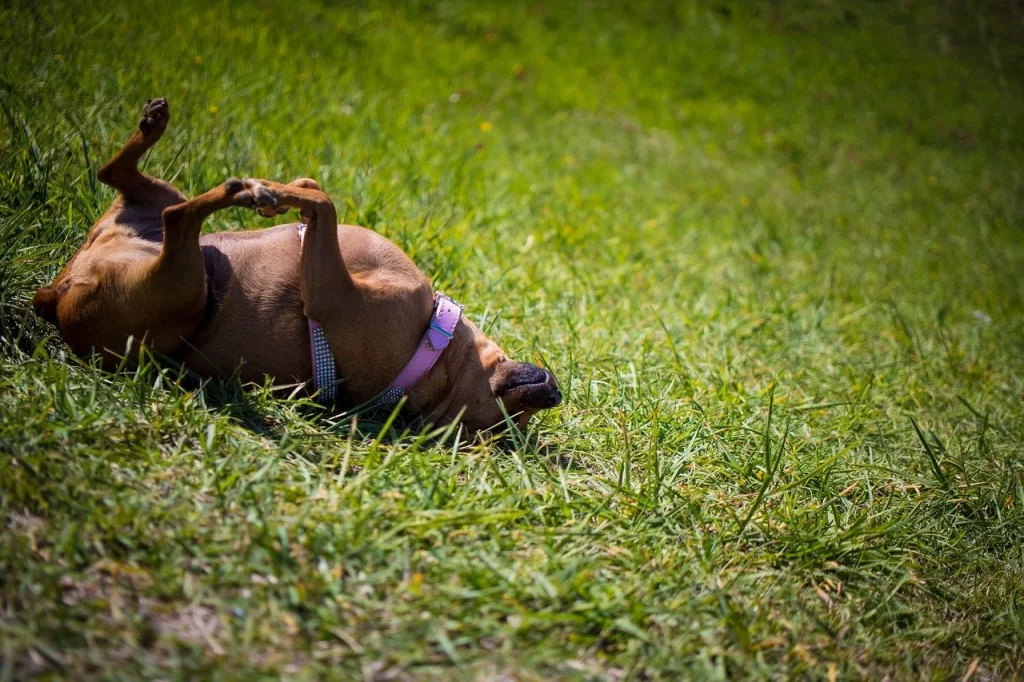
Steps For Training
Your dog rolls sideways on his back, completing a full rotation.
Step 1
Start with your dog in a down position, facing you. Kneel in front of him, holding a treat to the side of his head opposite the direction you wish him to roll.
Step 2
Move the treat from his nose toward his shoulder blade while telling him to "rollover." This should lure your dog to roll on his side. Praise and release the treat.
Step 3
When you are ready to move to the next step, continue the motion with your hand as you move the treat from his shoulder blade toward his backbone. This should lure him to roll onto his back, and over to his other side. Reward the moment he lands on his opposite side.
Step 4
As he improves, use a more subtle hand gesture.
WHAT TO EXPECT: Practice five to ten times per session, and in two weeks your dog could be rolling over on cue!
TROUBLESHOOTING
MY DOG IS SQUIRMING, BUT NOT ROLLING ONTO HIS SIDE
It's all about your hand position. You want his neck arched as if his nose were trying to touch his shoulder blade. Try not to physically push him to his side, as he may interpret this as a domineering action and submit.
MY DOG ROLLS TO HIS SIDE BUT DOES NOT CONTINUE TO ROLL ONTO HIS BACK
In this case, help your dog finish the rollover by gently guiding his front legs over with your hand.
TIP: Most dogs have a dominant side, so start by teaching a rollover in the direction your dog seems to prefer.
- Lure his nose toward his shoulder blade.
- Continue luring toward his backbone. advanced
7. Play Dead
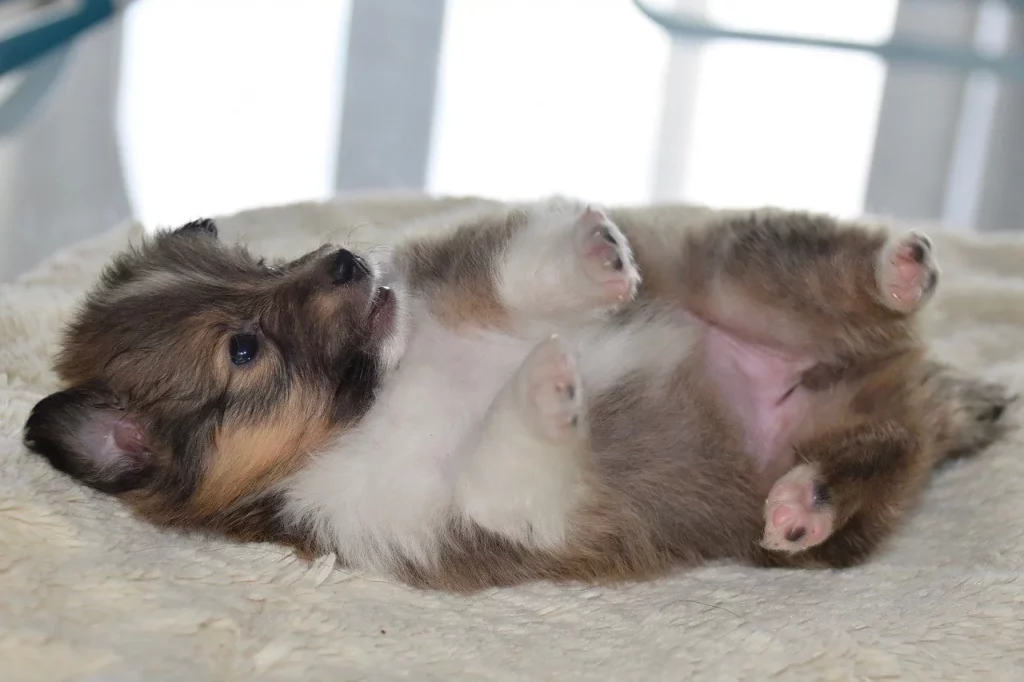
Steps For Training
When playing dead , your dog rolls onto his back with his legs in the air. He remains "dead" until you cue his miraculous recovery. Stick 'em up or you're a dead dog!
Step 1
Teach this trick after your dog has had some exercise and is ready to rest. Put your dog in a down and kneel in front of him. Hold a treat to the side of his head and move it toward his shoulder blade, as you did when teaching rollover . Your dog should fall to his side.
Step 2
Continue to roll him to his back by guiding his midsection. Praise him and give him a belly scratch while he is on his back. Reinforce the verbal cue by saying "good bang."
Step 3
As your dog improves, try to lure him into position with the treat only, without touching him. If he is likely to roll completely over instead of stopping half way, stop him with your hand on his chest, and then slowly release your grip so that he holds the position on his own.
Step 4
Practice this skill until you can elicit the behavior with the "bang!" cue and hand signal. Your dog should stay in this position until he is released with "OK" or "you are healed!" or some other release word.
WHAT TO EXPECT: This position can be a little awkward for your dog, and will take some getting used to. Practice in combination with rollover , so your
the dog understands the difference.
TROUBLESHOOTING
DEAD DOGS SHOULDN'T HAVE WAGGING TAILS!
Try lowering your voice to a more commanding tone to stop the wagging. Or don't worry about it … it's sure to get a giggle!
MY DOG DOES A SLOW AGONIZING DEATH THAT REQUIRES SEVERAL BULLETS AND A FEW CIRCLES
Improvise with "darn, missed him! Will you die already! Talk about a scene-stealer!"
TIP: As the use of a "finger gun" is not always appropriate with young children, consider using a command of "boo!" and scaring your dog to death instead.
"Things I don't like: baths, kitty sleeping in my bed, being left alone." STEPS:
- Put your dog in a down, facing you. Lure him onto his side, as in a rollover.
- Continue to lure him onto his back and steady him there.
- Practice until your dog can play dead on cue!
Recommended Reading
- How To Training A Dog To Pee Outside Step By Step
- How To Housetraining Your Puppy In 4 Easy Steps
- Can Dog Eat Avocado? Here's the Answer
Source: https://petsheed.com/tricks-to-teach-dog/
0 Response to "Easy Tricks to Teach a Older Dog"
Post a Comment